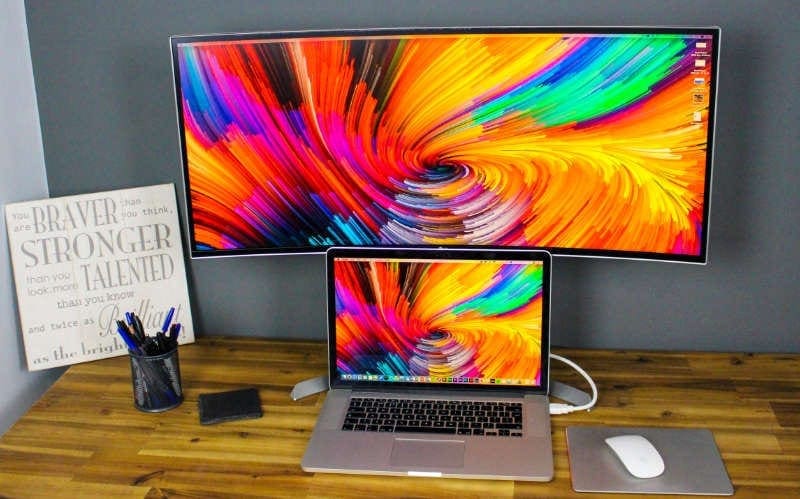Macs ship with the display set at a certain resolution, and Apple defines this in the technical specifications for each model. But with Retina displays, these numbers can get confusing: there is the display’s resolution and the “looks like” resolution used on the Mac. Resolutions on Retina Macs look like half the actual number of pixels measured vertically and horizontally because of “pixel doubling.”
The Apple menu contains frequently used items and always appears in the upper-left corner of the screen. To open it, click the Apple icon. You’ll need Mac OS X 10.11 or later to have this option in preferences: Open System Preferences from the Apple menu or with Spotlight Go to the “General” preference panel” Check the box for “Automatically hide and show the menu bar” to have the effect instantly take effect. Overview Display Menu shows a status item in your menu bar that lets you change your display settings with a single click. Depending on your display setup, you can set the screen resolution, toggle mirroring, and adjust the refresh rates.
For example, if you have (as I do) a 5K iMac, the display resolution is 5120×2880, but the Displays pane of System Preferences tells me that it looks like 2560×1440.
NBPCLCD Screen Replacement for Apple MacBook Pro 13' A1706 A1708 Late 2016 Mid 2017 13.3' Retina LCD Display Screen Complete Full Assembly Repair P/N: 661-05323, 661-07970(Space Gray) 3.7. As an example, a Retina MacBook Pro 13' can be set to 3360×2100 maximum resolution, as opposed to Apple's max supported 1680×1050. It is accessible from the menu bar. You should prefer resolutions marked with (lightning), which indicates the resolution is HiDPI or 2× or more dense in pixels.

That’s the default resolution, but you can change this if you want. To do so, you must first check Scaled in the Displays pane, as I have in the screenshot above, and you then see five options. These range from larger text to more space, with the Default setting in the middle.
If you have aging eyes or just want to see less on your display, try one of the settings to the left of the Default option. If you want to see more on the display—with smaller fonts, menus, etc.—then try one of the settings to the right. When you hover over one of these options, the Displays pane shows a text saying that “Using a scaled resolution may affect performance.” This is because your graphics card might not be able to keep up with a higher resolution (i.e., when things look smaller), or that some of your apps may not display correctly.
The 13-inch Retina MacBook Pro has a native resolution of 2560×1600 and uses a default “looks like” resolution of 1280×800. Things are a bit different with Apple’s 12-inch Retina MacBook. Its display has a resolution of 2304×1440, but the default “looks like” resolution it uses is not half that, but a bit more: 1280 x 800, just like the 13-inch MacBook Pro. So it looks like the same number of pixels, but on a display that’s one inch smaller diagonally. Naturally, these laptops offer other scaled options; each lets you choose from a total of four resolutions, from 1024×640 to 1440 900 (12-inch MacBook) or 1680×1050 (13-inch MacBook Pro).
If you have a second display connected to your Mac, you can choose a resolution for that display, also from the Displays pane of System Preferences. Select the display in the preference pane’s popup menu, then hold down the Option key and click the Scaled button to see your options.
Even more resolutions

Maybe you want even more choice in the resolution of your display. If so, you can use Many Tricks’ $3 Resolutionator. This utility lets you quickly switch resolutions without going to System Preferences, but also lets you choose from non-Retina resolutions. For example, in the screenshot below, you can see the options available on my 12-inch MacBook. I could choose to set its display to 2560×1600; that’s not the resolution that looks like half that, which is the default, but a resolution that actually uses using every pixel of the display.
Display Menu Pro Mac
Naturally, things are quite small at that resolution, so you probably won’t want to do this often, but there may be times when you want to keep your eye on several windows at a time, and only a high resolution like that will work.
Best Displays For Mac Pro
When I work on my MacBook, I sometimes switch resolutions. When I’m focusing on writing, I use the native resolution, which makes texts large enough that I don’t need to strain, but if I have a lot of windows open, I sometimes go to a higher resolutions to get a broader view of what I’m doing. Try changing resolutions on your Mac; you may find that it’s easier to read texts, or that you can see more, than at the default resolution.